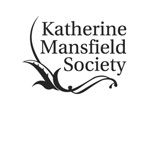03 August
03 August
3 August 1920
2 Portland Villas, Hampstead - London
[. . .] Turn to the page of the heroine's seduction:
The wheat stacks were thatching, and in the rickyard, in the carpenter's shop, and in the warm valleys, listening to the sheep-bells tinkling, they often lay together talking of love and marriage till one evening, putting his pipe aside, William threw his arm round her, whispering she was his wife.
‘Putting his pipe aside!' Could anything express a nicer control, a cooler view of the emotional situation? It is only equalled by: ‘Soon after thoughts betook themselves on their painful way, and the stars were shining when he followed her across the down, beseeching her to listen.' It comes to this. There is not, in retrospect, one single page which is not packed as tightly as it can hold with whatever can be recorded. When we follow Esther to London here is the crown of the book. It is the London of that particular time preserved whole, a true ‘London of the water's edge' - a London of theatres, music-halls, wine-shops, public-houses. And it is the scene of the struggle of Esther Waters to be a good woman and to bring up her child against fearful odds. The life of a general servant - how sordid, how vulgar, how ignoble! What a trapesing up and down stairs and a turning-out of ugly rooms! Mr Moore spares us none of it, and when her ‘luck changes', and, married to the man who seduced her, Esther has a home of her own, it is the centre of a low-class gambling lot. Could all this be more faithfully described than the author has described it? Could it possibly be more complete, more probable? The technique is so even, it is as though a violinist were to play the whole concerto in one stroke of the bow. [. . .]Review of Esther Waters by George Moore, Athenaeum, 6 August 1920]

